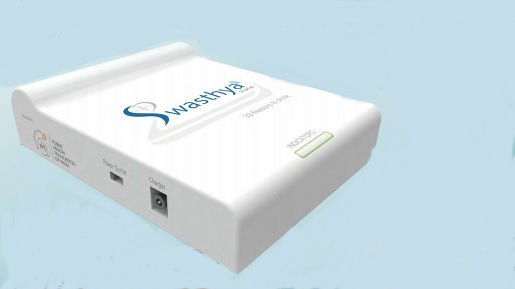A U.S-educated academic returns to India to create a mobile diagnostic device powered my digital health tools to assist rural healthcare workers.
March 29, 2016

A U.S-educated academic returns to India to create a mobile diagnostic device powered my digital health tools to assist rural healthcare workers.
Arundhati Parmar
That global health is a puzzle that mobile health technologies can help to solve is not new.
But it's always amazing to see entrepreneurs dream up new applications nonetheless.
This latest story comes from India and a device called Swasthya (Health) Slate that was designed to help rural healthcare workers run diagnostic tests and get results quickly. For the past few years, the device has been used It is a mobile platform that comprises of a hardware device that connects to a digital thermometer, a blood pressure monitor, heart rate sensor, a 3-lead ECG system, a blood sugar monitor and a water quality meter.
When connected that interface unit uses Bluetooth to communicate with a Swasthya Slate app on Android phone or tablet can help to run 33 diagnostic tests. The tests run everything from the body temperature, blood pressure, ECG, rapid pregnancy to others tests like protein in urine, rapid typhoid test and HIV 1 and HIV 2 testing.
The goal is to record and store data in the cloud very easily and quickly, says Kanov Kahol, team leader of Affordable Health Technologies Division, Public Health Foundation of India, who is credited with conceiving the device. Kahol was an assistant professor in the School of Biological and Health Systems Engineering,Arizona State University, and an assistant professor adjunct in Mayo Clinic.
In YouTube videos explaining how the device works, Kahol talks about how Swasthya Slate can hold great value for health researchers for epidemiological purposes. That goes beyond the more immediate value it holds just for patients and frontline healthcare workers struggling to manage their patients.
The system takes into account that users - healthcare workers - may not be fluent in English. As such the device supports Hindi, Urdu and Telegu. And perhaps most importantly data can be stored on the Android phone or tablet in areas without Internet connection. Once, connection is available a batch upload or single upload is possible. The device can even use SMS to upload data, according to its website.
An article on TechCrunch notes how cheap the device is - $600 - compared with diagnostic systems in the U.S. and each test takes just minutes to report results. Usability testing results reported on the Swasthya Slate website shows that "average learning time to first correct execution of the software was 10 minutes, and by 45 minutes users were able to use the apps with less than 1% "slip" errors (e.g., accidental pressing of buttons and other errors).
The device is not just being used in India, but parts of South America, Africa and Europe as well, according to Swasthya Slate's website.
The video below demonstrates the challenges that average Indians face in getting diagnostic test results and a demo of the device in the field.
You May Also Like


